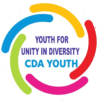🌍 Case Study of Youth-led Peace Initiatives
Short, Easy-to-Read Notes for Young Readers
Peacebuilding is not always about governments, treaties, or diplomats. Often, it starts with young people—students, artists, activists—who decide that they want to make their schools, villages, and cities more peaceful. In India, Bangladesh, and Sri Lanka, many youth-led initiatives show how small actions can create big changes.
Below are four case studies presented in a simple, story-like format. Each highlights what the initiative was about, how it worked, and why it mattered.
🇮🇳 Case Study 1: “Voices of Harmony” – Interfaith Youth Dialogue in Odisha, India
The Context
Odisha is home to diverse communities with Hindu, Muslim, and Christian populations. Sometimes, lack of understanding leads to mistrust and tension, especially among young people who grow up in divided neighborhoods.
The Initiative
In 2024, a group of 25 youth leaders in Bhubaneswar created a program called “Voices of Harmony”. They organized:
- Street theatre shows on respect and unity.
- Mural painting in schools with the message “Peace begins with respect.”
- Open dialogue sessions where youth of different religions sat together and shared their everyday experiences.
Impact
- 500 students from different backgrounds joined in the events.
- A school principal noted fewer fights between groups of students after the program.
- Young participants reported feeling more confident about speaking to peers from other communities.
Youth Reflection
“We learned that small acts—like listening without judgment—can heal divisions.” – Ankita, 19
🇧🇩 Case Study 2: “Green Peace Clubs” – Climate Action for Peace in Khulna, Bangladesh
The Context
Khulna, in southern Bangladesh, faces severe flooding and displacement due to climate change. Communities under pressure sometimes experience conflict over land, water, and jobs. Youth saw the link between environmental protection and peace.
The Initiative
In 2023, young volunteers started “Green Peace Clubs” in 10 schools. Activities included:
- Planting mangrove trees to protect the shoreline.
- Organizing climate awareness rallies linking the environment with peace.
- Training students on how to reduce plastic waste and conserve water.
Impact
- 2,000 mangroves planted by students, protecting local villages.
- Teachers reported reduced tension among families competing for scarce resources.
- The project connected environment with peacebuilding, showing youth the “bigger picture.”
Youth Reflection
“When we protect nature, we protect peace. Climate justice is peace justice.” – Rahim, 21
🇱🇰 Case Study 3: “Beats for Peace” – Arts for Reconciliation in Jaffna, Sri Lanka
The Context
Northern Sri Lanka still carries the scars of decades of conflict. Youth from Tamil, Sinhalese, and Muslim backgrounds often live in isolation, with little chance for positive interaction.
The Initiative
In 2024, young artists in Jaffna launched “Beats for Peace” to use arts for healing. They:
- Organized music workshops with traditional instruments from different ethnic groups.
- Held dance performances co-created by Tamil and Sinhalese youth.
- Painted a community peace mural with the message: “Together, We Heal.”
Impact
- 300 youth directly engaged in performances.
- Families who had not spoken for years came together to watch their children perform.
- Young participants said the arts gave them “a language of unity” when words felt too heavy.
Youth Reflection
“Art helps us express what words cannot. Together, we paint peace.” – Shalini, 20
🇮🇳/🇧🇩/🇱🇰 Cross-Border Case Study 4: “Youth Peace Hackathon” – Digital Innovation for Unity
The Context
Across South Asia, young people face common issues—hate speech online, misinformation, and digital divides. Instead of fueling conflict, youth wanted to use technology for peace.
The Initiative
In early 2025, youth organizations from India, Bangladesh, and Sri Lanka came together for a “Youth Peace Hackathon”. Over 3 days, teams of young coders, designers, and activists created solutions for peace, including:
- A mobile app for peer mediation in schools.
- A digital storytelling platform for youth to share positive peace stories.
- A fact-checking chatbot to counter online hate speech.
Impact
- 120 youth from 3 countries collaborated virtually and in person.
- One project was later supported by UNICEF to expand across South Asia.
- Participants learned not only coding skills, but also cross-border teamwork and empathy.
Youth Reflection
“Technology is a tool—we can use it to divide, or we can use it to connect. We chose connection.” – Ayesha, 22, Colombo
🌟 Key Lessons from These Case Studies
- Peace is Local – Every story begins in a school, neighborhood, or village. Change doesn’t need to start big.
- Peace is Cross-Cutting – Whether it’s interfaith harmony, climate action, or digital innovation, peace connects to all aspects of life.
- Youth are Innovators – From murals to hackathons, young people bring fresh and creative solutions.
- Collaboration is Powerful – Most successes came when youth worked together across differences—religion, ethnicity, or national borders.
- Stories Inspire Action – When young people share their stories, they encourage others to take the first step.
✨ Closing Reflection
These case studies are not about perfect solutions or grand gestures. They are about young people who decided to act in small but powerful ways. A mural, a mangrove, a dance, an app—all became vehicles for peace.
The message is clear: youth are not just the leaders of tomorrow—they are peacebuilders of today.
As readers, you are invited to take inspiration from these stories. Look around your own community. Is there a school that needs dialogue, a park that needs trees, a story that needs to be told? That’s where peace begins. And just like Ankita in Odisha, Rahim in Khulna, Shalini in Jaffna, and Ayesha in Colombo—you too can add your chapter to the ongoing story of youth-led peace.
